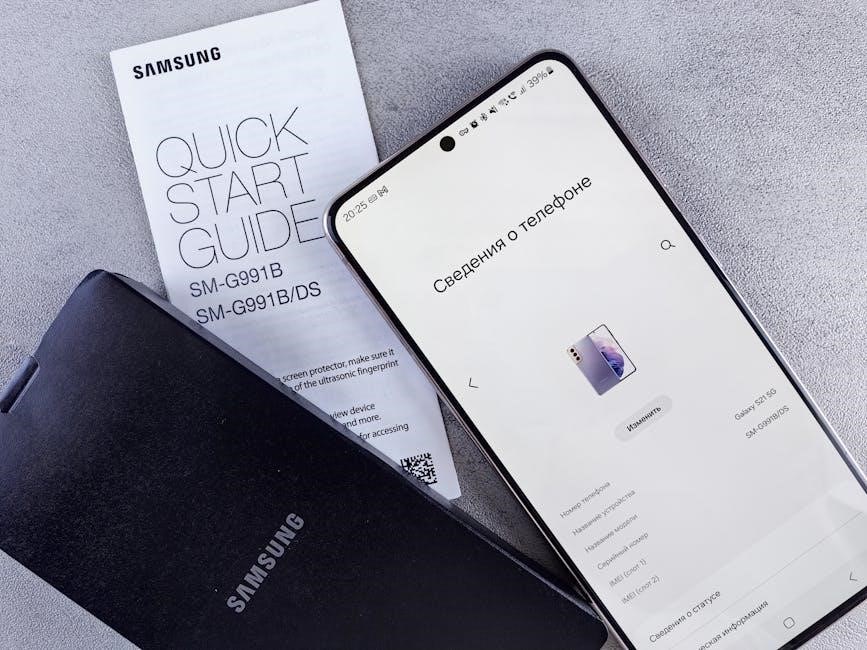Welcome to the Danby Dehumidifier Manual! This guide helps you understand your dehumidifier’s features, installation, and maintenance for optimal performance.
Explore the Aribio Dehumidifier User Manual to discover its applications, troubleshooting, and more, ensuring you get the most out of your product.
1.1 About the Dehumidifier
Your dehumidifier is designed to efficiently remove excess moisture from the air, improving indoor air quality and comfort. Available in models like Danby and Aribio, it offers portability and reliability. The device operates by drawing in humid air, cooling it to condense moisture, and circulating dry air back into the room. This process helps prevent mold growth and mildew, creating a healthier environment. Key features include a built-in pump, smart sensors, and an easy-to-use interface for seamless operation.
1.2 Purpose of the Manual
This manual is designed to guide you through the safe and effective use of your dehumidifier. It provides detailed instructions for installation, operation, and maintenance to ensure optimal performance. Whether you’re a new or experienced user, this guide will help you understand the device’s features and troubleshooting solutions.
By following this manual, you’ll be able to maximize the benefits of your dehumidifier while maintaining a healthy and comfortable indoor environment. It serves as a valuable resource for anyone seeking to get the most out of their appliance.
1.3 Quick Start Guide
To get started, carefully unpack your dehumidifier and ensure all components are included. Place the unit on a level surface in a well-ventilated area. Plug in the power cord and set your desired humidity level using the control panel. Allow the device to run until the desired humidity is achieved. Regularly empty the water tank or connect a drain hose for continuous operation. Refer to the manual for detailed instructions and troubleshooting tips to ensure optimal performance.
- Unbox and inspect the dehumidifier.
- Position it on a stable, level surface.
- Plug in and set your preferred settings.
- Monitor and maintain the water tank.

Safety Precautions and Warnings
Always read this manual carefully before using your dehumidifier. Ensure the area is clear of obstructions and keep children away. Avoid water exposure to electrical components.
- Prevent water from entering electrical parts.
- Keep the dehumidifier out of reach of children.
- Ensure proper ventilation in the room.

2.1 General Safety Guidelines
Always read and follow the instructions in this manual carefully. Ensure the dehumidifier is placed on a stable, level surface away from direct sunlight and heat sources.
- Keep the dehumidifier out of reach of children and pets to avoid accidents.
- Avoid exposing the unit to water or moisture, as this may cause electrical issues.
- Do not operate the dehumidifier near flammable materials or in areas with poor ventilation.
- Unplug the device before cleaning or performing maintenance to ensure safety.
Regularly inspect the power cord and plug for damage to prevent hazards.
2.2 Electrical Safety
Ensure the dehumidifier is plugged into a grounded electrical outlet with the correct voltage rating. Never use an extension cord or overload circuits, as this may cause fire hazards.
- Keep the power cord away from water to prevent electrical shock or damage.
- Avoid touching electrical components with wet hands for safety.
- Do not modify or tamper with the unit’s electrical system.
- Unplug the dehumidifier during cleaning or maintenance to prevent accidental start-ups.
Always follow the manufacturer’s electrical specifications for safe operation.
2.3 Child Safety
Ensure children stay away from the dehumidifier to avoid accidents. Keep them from playing with controls or the water tank, as this may cause injury or damage.
- Prevent children from inserting objects into the unit or tampering with electrical parts.
- Teach children about the dangers of electrical appliances and water exposure.
- Supervise children near the dehumidifier to ensure safe operation and avoid mishaps.
Always prioritize child safety to prevent potential hazards associated with the dehumidifier.
Installation and Placement
Place the dehumidifier on a firm, level surface for stable operation. Ensure good airflow around the unit by keeping it away from walls and furniture. Position it near a drain for efficient water disposal, if applicable.

3.1 Choosing the Right Location
Place your dehumidifier in areas with high humidity, such as basements, laundry rooms, or crawl spaces. Ensure it is at least 6 inches away from walls and furniture to maintain proper airflow. Avoid direct sunlight to prevent overheating. For models without a built-in pump, position it near a drain to simplify water tank emptying. Keep it away from heating vents to minimize dust circulation. Level the surface before placement to ensure stable operation and optimal performance.
3.2 Leveling the Dehumidifier
Proper leveling ensures your dehumidifier operates efficiently and prevents water damage. Use a spirit level to check the unit’s balance. If uneven, adjust the feet or place shims under the legs. Ensure the surface is firm and even. Improper leveling can cause water to collect unevenly in the tank or affect the compressor’s performance. For models with adjustable feet, tighten them securely after leveling. This step ensures stable operation and optimal moisture removal.
3.3 Drainage Options
Your dehumidifier offers two primary drainage options: manual or continuous. For manual drainage, empty the water tank regularly when it reaches capacity. For continuous drainage, attach a drainage hose to the unit and direct it to a nearby floor drain or sink. Ensure the hose is securely connected to avoid leaks. Some models may require specific adapters for proper hose fitting. Always follow the manufacturer’s guidelines for drainage setup to ensure efficient operation and prevent water overflow.
Operating the Dehumidifier
Plug in the dehumidifier, turn it on, and set your desired humidity level using the control panel. Monitor the water tank and adjust settings as needed for optimal performance.
4.1 Understanding the Control Panel
The control panel is your command center for operating the dehumidifier. It features a power button, humidity level adjuster, and LED indicators for mode selection, timer, and water level status.
- The power button turns the device on/off.
- The humidity adjuster sets your desired moisture level.
- Indicator lights show current settings and water tank status.
- Optional timer controls allow you to set operation duration.
Use these controls to customize performance and monitor operation effortlessly.
4.2 Setting the Humidity Level
To optimize your dehumidifier’s performance, set the desired humidity level using the control panel. The humidity adjuster allows you to choose between 30-80% relative humidity. For most spaces, a range of 40-50% is recommended. Press the humidity adjuster until the LED display shows your preferred level. The dehumidifier will automatically maintain this setting, ensuring a comfortable environment. Adjust as needed based on room conditions or personal preference.
- Set the ideal range for your space.
- The device will monitor and adjust humidity levels accordingly.
4.3 Running the Dehumidifier
To start the dehumidifier, plug it into a grounded electrical outlet and press the power button. The device will begin operating automatically based on the set humidity level. Ensure the air filter is clean and the water tank is properly installed. For optimal performance, keep doors and windows closed to maintain the desired humidity level. The dehumidifier will run continuously until the set humidity is achieved or the water tank is full.
- Plug in the device and press the power button.
- Let it run until the desired humidity level is reached.
- Ensure the area is well-sealed for best results.
Maintenance and Cleaning
Regular maintenance ensures your dehumidifier runs efficiently. Clean the air filter monthly and check the water tank. Proper care prevents issues and extends lifespan.
5.1 Cleaning the Filter
Cleaning the filter is essential for maintaining your dehumidifier’s efficiency. Turn off the unit and unplug it for safety. Remove the filter and gently vacuum or wash it with mild soap. Allow it to dry completely before reinstalling. Regular cleaning prevents dust buildup and ensures optimal performance. Clean the filter every 1-2 months, depending on usage, to keep your dehumidifier running smoothly and effectively.

5.2 Draining the Water Tank

Regularly draining the water tank is crucial to ensure your dehumidifier operates efficiently. Turn off the unit and unplug it before attempting to drain. Locate the water tank, usually at the bottom, and check if it’s full. Carefully lift and empty the tank into a sink. For larger tanks, use the built-in handle for easy portability. Clean the tank with mild soap to prevent mold growth. Refer to your manual for specific drainage options, such as a built-in pump or continuous drainage setup.
5.3 Cleaning the Exterior
Regular cleaning of the dehumidifier’s exterior ensures optimal performance and longevity. Use a soft, dry cloth to wipe down the surface, removing dust and dirt. Avoid harsh chemicals or abrasive cleaners, as they may damage the finish. For stubborn stains, dampen the cloth slightly but ensure no moisture enters the unit. Unplug the dehumidifier before cleaning to prevent electrical hazards. This simple maintenance step keeps your device looking new and functioning efficiently.

Troubleshooting Common Issues
Welcome to the troubleshooting section of your dehumidifier manual. This guide helps identify and resolve common issues, ensuring your appliance runs smoothly and efficiently at all times.
6.1 Dehumidifier Not Turning On
If your dehumidifier fails to turn on, check the power source first. Ensure it is properly plugged in and the outlet is functioning. Verify the circuit breaker or fuse hasn’t tripped. Inspect the power button for damage or malfunction. Check if the water tank is full, as some models automatically shut off in this case. Ensure the air filter is clean and unobstructed. If issues persist, consult the manual or contact customer support for assistance.
6.2 Excessive Noise
If your dehumidifier is producing excessive noise, check for blockages in the air intake or exhaust vents. Ensure the unit is placed on a level surface, as misalignment can cause vibration. Clean or replace the air filter if it is clogged, as this can strain the motor. Check for loose internal components or debris inside the unit. If the noise persists, consider resetting the device by unplugging it for 30 seconds. Consult the manual or contact support for further assistance.
6.3 Water Tank Not Filling
If the water tank is not filling, ensure the drain hose is not kinked or blocked. Check that the hose is securely connected to both the dehumidifier and the drain outlet. Verify that the unit is properly leveled, as improper alignment can disrupt water flow. If using a built-in pump, ensure it is functioning correctly. A faulty float switch may also prevent water collection. Consult the manual for specific troubleshooting steps or contact customer support for assistance.
Advanced Features
Your dehumidifier may include advanced features like a built-in pump for continuous drainage, a timer function for scheduled operation, and smart sensors for automatic humidity control.
7.1 Built-In Pump
The built-in pump allows for continuous drainage without emptying the water tank manually. It pumps water to a higher location, ideal for basements or areas with limited drainage options.
- Efficient Water Removal: Automatically drains water to a sink, drain, or outside.
- Convenience: Eliminates the need for frequent tank emptying.
- Setup: Connect a drainage hose to the pump outlet and direct it to your desired location.
Ensure the pump is properly installed and maintained for optimal performance.
7.2 Timer Function
The timer function allows you to set specific operation times for your dehumidifier, enhancing energy efficiency and convenience. You can program it to run for a set duration or start at a particular time.
- Custom Scheduling: Set the dehumidifier to operate during off-peak hours or when you’re not home.
- Energy Savings: Reduces unnecessary operation, lowering your energy bills.
- Convenience: Ensures your space remains dry without constant monitoring.
Use the timer to optimize performance and maintain a comfortable environment effortlessly.
7.3 Smart Sensors
Smart sensors automatically monitor and adjust humidity levels, ensuring optimal performance. They detect moisture in the air and regulate the dehumidifier’s operation accordingly.
- Automatic Humidity Control: Maintains your desired humidity level without manual adjustments.
- Energy Efficiency: Reduces power consumption by running only when needed.
- Advanced Accuracy: Provides precise readings for consistent comfort.
Smart sensors enhance convenience and efficiency, making your dehumidifier smarter and more adaptable to your space’s needs.
Technical Specifications
Power consumption: 280W. Coverage area: up to 1,500 square feet. Noise level: 40 dBA. Designed for efficient and quiet operation in various spaces.
8.1 Power Consumption

Your dehumidifier operates at a power consumption of 280W, ensuring efficient energy use while maintaining high performance. This rating allows for cost-effective operation without compromising on moisture removal capabilities. Designed to balance energy efficiency with powerful dehumidification, the unit is suitable for both small and large spaces. Always refer to the technical specifications in your manual for precise energy usage details, as this may vary slightly depending on the model and operating conditions.
8.2 Coverage Area
The dehumidifier is designed to cover areas up to 1,500 square feet, making it ideal for large rooms or basements. However, actual coverage may vary depending on humidity levels and airflow. For optimal performance, ensure good air circulation and maintain the recommended humidity settings. Refer to your manual for specific coverage details tailored to your model and environment.
8.4 Noise Level
The dehumidifier operates at a noise level of 40-50 dB, ensuring quiet performance suitable for residential spaces. Advanced models feature noise-reduction technology for minimal disruption. For optimal quiet operation, place the unit on a firm, level surface and avoid carpeting, which can amplify vibrations. Regular maintenance, such as cleaning the fan, also helps maintain low noise levels. Refer to your manual for specific noise specifications tailored to your model.

Frequently Asked Questions
Frequently Asked Questions. Find answers to common queries about your dehumidifier’s usage, maintenance, and troubleshooting to ensure optimal performance and address any concerns effectively.
9.1 How Often Should I Run My Dehumidifier?
The frequency of running your dehumidifier depends on humidity levels and room conditions. If the humidity is high, especially after rain or in damp areas, run it continuously until the desired level is reached. In basements or crawl spaces, it may need to operate more frequently to maintain dryness. Always monitor the water tank to ensure it doesn’t overflow. Adjust usage based on seasonal changes and moisture levels for optimal performance.
9.2 Can I Use My Dehumidifier in the Basement?
Yes, dehumidifiers are highly effective in basements, which often experience high humidity and moisture. Using a dehumidifier in your basement helps reduce dampness, prevent mold growth, and create a healthier environment. Ensure proper ventilation and place the unit away from walls for optimal airflow. Regularly check the water tank capacity to avoid overflow. This is especially important in basements, where consistent moisture levels may require frequent operation. Always follow the manufacturer’s guidelines for basement use.
9.3 Why Is My Dehumidifier Freezing Up?
Your dehumidifier may freeze up due to low temperatures, improper drainage, or restricted airflow. Ensure the room temperature is above 41°F (5°C) for proper operation. Check for blockages in the air intake or exhaust. If the water tank is full, it can cause the system to malfunction. Regularly inspect the drainage system and ensure it’s functioning correctly. If the issue persists, refer to the troubleshooting section or contact customer support for assistance.

Warranty and Customer Support
Your dehumidifier is backed by a 2-year warranty covering parts and labor. For inquiries or assistance, contact our customer service team at support@danby.com or call 1-800-263-2629.
10.1 Warranty Information
Your dehumidifier is protected by a 2-year limited warranty covering defective parts and labor. The warranty period begins from the date of purchase. For warranty claims, contact our customer service team with your proof of purchase. Damage caused by misuse or improper installation is not covered. The warranty is non-transferable and applies only to the original purchaser. For details, refer to the warranty certificate provided with your product.
10.2 Contacting Customer Service
For assistance, contact our customer service team via phone at 1-800-561-3344 or email at support@danby.com. Our representatives are available Monday to Friday, 8:30 AM to 5:00 PM EST. Visit our website at www.danby.com for live chat support or to submit a service request. Have your model number and purchase date ready for efficient service. Our team is here to address any concerns, provide troubleshooting, or assist with warranty claims.
Environmental Disposal
Ensure environmentally responsible disposal of your dehumidifier by following local regulations and recycling guidelines. Properly recycle components to minimize environmental impact and conserve resources.
11.1 Proper Disposal Methods
Dispose of your dehumidifier responsibly by following local regulations. Check for certified e-waste recycling centers that handle appliances. Remove refrigerants safely, as they can harm the environment if not handled properly. Drain the water tank and disconnect electrical components before disposal. Consider donating or selling the unit if it is still functional. Always prioritize eco-friendly disposal methods to reduce environmental impact and conserve resources effectively.
11.2 Recycling Options
Recycling your dehumidifier is an eco-friendly choice. Many communities offer appliance recycling programs that safely process electronic and metal components. Check with local recycling centers for specific guidelines. Some retailers also provide drop-off options for old appliances. Recycling helps conserve resources and reduces landfill waste. Ensure hazardous materials, like refrigerants, are handled by certified professionals. By recycling, you contribute to a more sustainable environment and support responsible waste management practices.